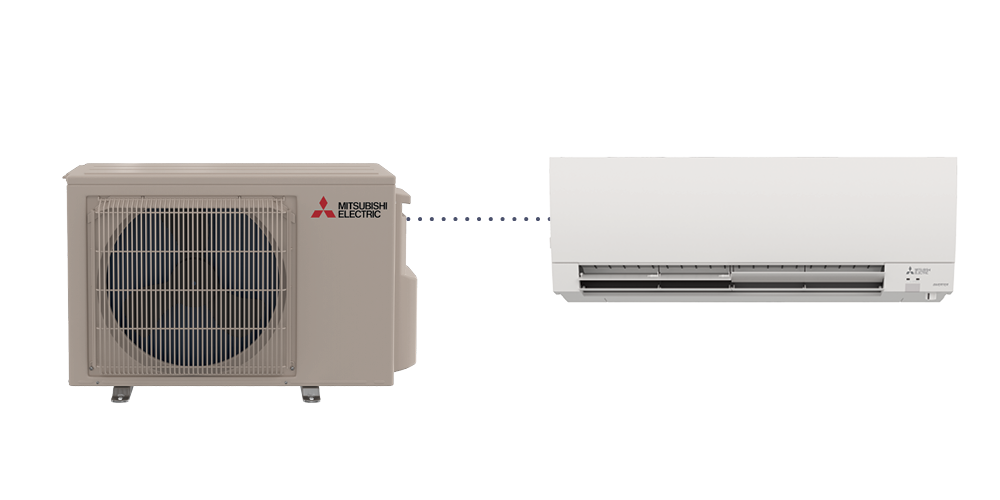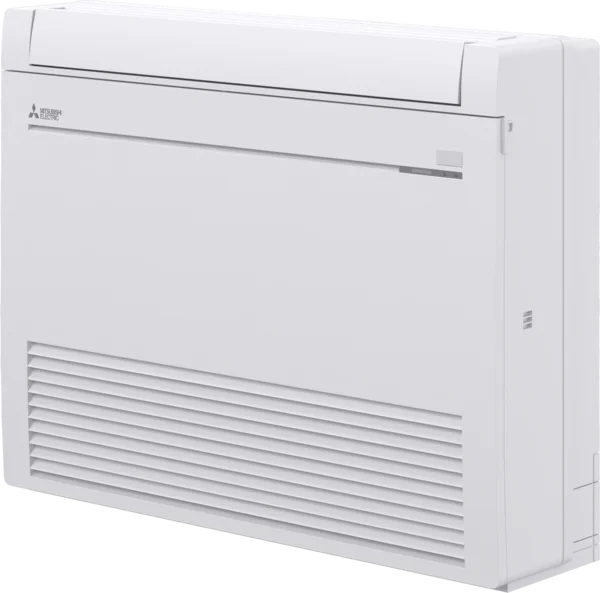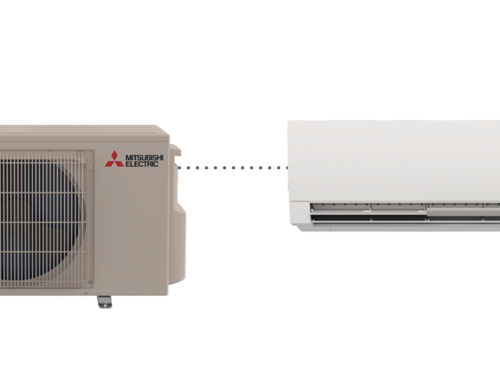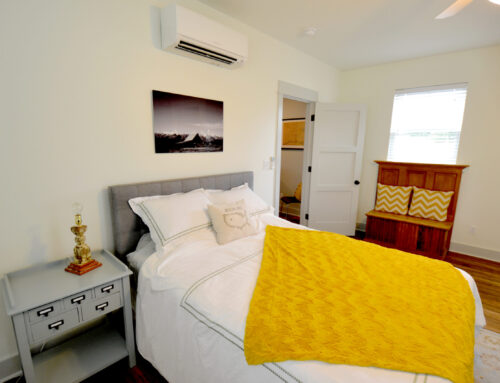As the warmer seasons approach, the quest for an efficient and adaptable home cooling system becomes paramount. Mini split AC systems have emerged as a premier solution, bridging the gap between cumbersome central air systems and less efficient window units.
With their innovative design, mini split ACs offer the luxury of zoned cooling without the necessity for intrusive ductwork, providing a seamless integration into any home environment. This guide aims to unfold the layers of mini split AC installation, offering insights into costs, types, and how to navigate the selection process for your specific needs.
Understanding Mini Split AC Installation Costs
The journey into the world of mini split ACs begins with a clear understanding of the potential financial investment. On average, homeowners might expect to spend around $4,500 on installation, but this figure is subject to a wide variance, with total costs potentially ranging from $1,200 to $16,400. Such a broad spectrum is attributable to a multitude of factors, including but not limited to the system’s size, its efficiency ratings, and the brand chosen.
For instance, a more extensive, high-efficiency system from a renowned brand will invariably cost more than a smaller, less efficient unit from a less prestigious manufacturer.
Types of Mini Split AC Units
When exploring the options for mini split AC units, it’s essential to understand not just the types available but also how much they typically cost.
The price can vary widely depending on factors such as capacity, brand, efficiency, and the specific features of each type. Here, we’ll delve into the most common types of mini split AC units, offering insights into their cost implications to help guide your decision-making process.
1. Wall-Mounted Units
Overview:
Wall-mounted mini split units are the most prevalent type, known for their straightforward installation and efficient operation. They are mounted high on the wall and connect to an outdoor compressor through a small hole, making them less intrusive and ideal for cooling individual rooms or open spaces.
Cost:
The cost for a wall-mounted mini split system can range from $1,200 to $4,300 for a single-zoned system. This variance primarily depends on the unit’s BTU capacity and SEER rating, with higher-capacity and more efficient units costing more.

2. Floor-Mounted Units
Overview:
Floor-mounted units are an excellent option for spaces where wall space is limited or where windows and architectural features prevent wall mounting. These units sit on the floor and are typically positioned against an exterior wall to facilitate the connection to the outdoor compressor.
Cost:
Floor-mounted mini split systems generally cost between $1,300 and $3,700. Like wall-mounted units, the price varies with capacity and efficiency, as well as any additional features specific to floor-mounted models, such as enhanced filtration systems or design elements that blend with home decor.

3. Ceiling Cassette Units
Overview:
Ceiling cassette units are installed into the ceiling, offering a discreet cooling solution that blends seamlessly with your home’s aesthetic. They are particularly well-suited to spaces with limited wall space and can provide a more distributed airflow compared to wall-mounted or floor-mounted units.
Cost:
The installation of ceiling cassette mini split systems is more complex and thus generally more expensive, with costs ranging from $2,000 to $6,000 for a standard single system. The higher end of the price range typically involves units with greater cooling capacity, superior efficiency ratings, and additional features like built-in LED lighting or whisper-quiet operation.

4. Ceiling-Mounted Units
Overview:
Ceiling-mounted units, also known as “ceiling suspended” units, are similar to ceiling cassettes but hang visibly from the ceiling rather than being recessed. These units are ideal for cooling larger spaces or areas with high ceilings and offer excellent airflow and cooling distribution.
Cost:
Ceiling-mounted mini split units tend to be priced between $2,400 and $5,500. Factors influencing cost include the unit’s cooling capacity, efficiency, and specific design features that may enhance performance or integration into various spaces.
Cost Breakdown by Unit Size and HVAC Zones
The cost of mini split AC systems varies significantly based on the size of the unit, measured in British Thermal Units (BTUs), and the number of HVAC zones you plan to have in your home.
These two factors greatly influence the overall installation price, making it crucial to understand how they impact costs. Here’s a detailed breakdown to help you navigate these considerations:
1. Cost by Unit Size (BTUs)
Overview: The size of a mini split system is a critical factor in determining its cost. Size, in this context, refers to the system’s capacity to cool air, measured in BTUs. The larger the space you need to cool, the more BTUs the system will need, directly influencing the price.
How Much BTUs Affect Cost:
- 6,000 BTU units: Ideal for small rooms up to 300 square feet, prices range from $450 to $1,600.
- 12,000 BTU units: Suitable for rooms between 300 to 550 square feet, these units can cost between $600 and $2,700.
- 18,000 BTU units: Designed for spaces up to 750 square feet, the price range is approximately $1,000 to $4,200.
- 24,000 BTU units: Capable of cooling larger areas up to 1,200 square feet, these systems are priced between $1,100 and $5,200.
Larger units, such as 30,000 to 42,000 BTUs, are designed for even more extensive spaces, with costs escalating accordingly, potentially reaching up to $8,000.
It’s important to select a unit with the right BTU capacity for your space. An undersized unit will struggle to cool effectively, leading to inefficiency and higher operating costs, while an oversized unit can lead to short cycling, reducing the system’s lifespan and efficiency.
2. Cost by Number of HVAC Zones
Overview: Mini split systems can be single-zoned or multi-zoned, allowing you to cool multiple areas or rooms independently. The flexibility to control temperatures in different zones can significantly enhance comfort and energy efficiency.
Single-Zone Systems:
A single-zone system consists of one outdoor compressor connected to one indoor unit. These systems are simpler and more cost-effective for cooling a single area.
Cost: Installation for a single-zone system typically ranges from $2,000 to $7,800, influenced by the system’s BTU capacity and features.
Multi-Zone Systems:
Multi-zone systems connect one outdoor compressor to several indoor units, each controllable independently, ideal for homes requiring different temperature settings across multiple rooms.
Cost: The initial investment for a multi-zone setup is higher due to the complexity and additional equipment. Prices start from $2,700 and can go up to $14,000 or more, depending on the number of zones, the capacity of each indoor unit, and the system’s overall efficiency
Adding Additional Zones:
Once the initial system is in place, expanding your system to include more zones becomes more cost-effective. Adding new zones can cost between $700 and $2,300 per zone, factoring in the type and capacity of the additional indoor units.
Brand Considerations and Efficiency Ratings
The market offers a plethora of brands, each with its own pricing strategy. Renowned manufacturers like Rheem, Daikin, Panasonic, Mitsubishi, and Fujitsu provide a range of options from budget to premium, affecting the installation cost. Efficiency, represented by the SEER rating, plays a pivotal role in both upfront and operational costs.
As per the U.S. Department of Energy’s 2023 standards, the minimum SEER rating is set at 14 for the northern U.S. and 15 for the southern regions. A higher SEER rating denotes a more efficient unit, promising significant savings on energy bills over time, despite a higher initial investment.
| Brand | SEER Rating | Estimated Price Range* |
| Daikin | 16-23 | $1,200 – $6,000 |
| Mitsubishi | 18-30 | $1,700 – $7,700 |
| Fujitsu | 19-33 | $1,900 – $6,400 |
| LG | 16-24 | $1,500 – $5,500 |
| Rheem | 17-19 | $1,150 – $8,300 |
| Panasonic | 16-27 | $1,500 – $3,800 |
Installation Location and Additional Costs
The choice of installation location within your home can influence the final cost, along with additional considerations such as permits, system upgrades, and the removal of old AC units. These factors necessitate a comprehensive discussion with your installer to fully understand the financial implications of your project.
Public and Private Rebates on Mini Split Installation
Federal Tax Credits
The U.S. government occasionally offers federal tax credits for energy-efficient home improvements, including the installation of mini split AC systems that meet specific SEER (Seasonal Energy Efficiency Ratio) ratings.
These credits can be applied directly to your income tax return, reducing the amount of tax you owe. Check the ENERGY STAR website or the Department of Energy for the latest information on federal tax credits.
State and Local Incentives:
Many states and municipalities offer their own rebates and incentives for energy-efficient heating and cooling systems. These can vary widely depending on your location but often include direct rebates, low-interest financing options, or tax credits.
The Database of State Incentives for Renewables & Efficiency (DSIRE) is an excellent resource for finding state-specific incentives.
Utility Company Rebates:
Local utility companies frequently offer rebates for customers who install energy-efficient appliances, including mini split AC systems.
These rebates aim to encourage reduced energy consumption during peak times and lower overall demand on the grid. Contact your local utility provider or visit their website to learn about available rebates.
Manufacturer Rebates:
AC system manufacturers sometimes provide rebates or promotional discounts on specific models of mini split systems, especially the most energy-efficient options.
These rebates can be seasonal or year-round and are often announced on manufacturers’ websites or through authorized dealers.
Finding Rebates
To find the most current rebates and incentives:
Visit Manufacturer Websites:
Leading manufacturers of mini split systems will often list current rebates or incentives directly on their websites.
Contact Local HVAC Contractors:
Many contractors are knowledgeable about current rebates and can help you navigate the process of applying for them as part of your installation project.







Leave A Comment